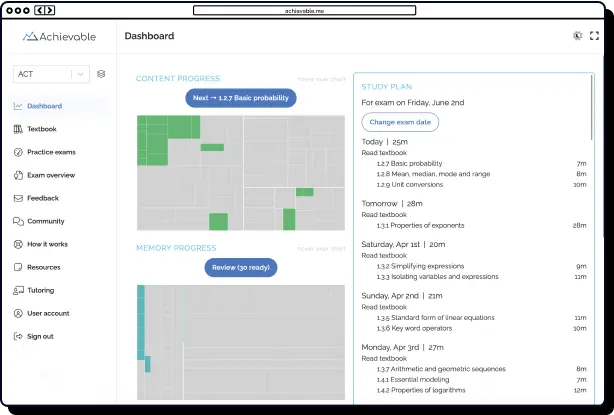
Types of insurance claims explained




Becoming an informed policyholder or a licensed insurance agent begins with understanding the basics of insurance claims. Claims represent one of the core aspects of the insurance industry, signaling to providers that a policyholder needs compensation for a covered event. Whether you are involved in an auto accident, facing significant medical expenses, or require assistance with property repairs after a natural disaster, having adequate insurance coverage helps manage related costs. The process of seeking payment begins with filing a claim, either directly or through a representative.
While insurance agents are often associated with selling policies, another main responsibility of licensees is guiding clients through the claims process. Navigating the filing of an insurance claim or contesting a denied request can be overwhelming for many policyholders. Therefore, to excel as a licensed insurance agent, it’s vital to develop comprehensive knowledge of insurance coverage and the complete claims process. Mastery of this information is not only critical for passing the insurance license exam but also invaluable for anyone eager to understand how insurance truly works.
What is an insurance claim?
Insurance works by having policyholders pay insurance companies a premium (typically a regular, monthly payment) in exchange for insurance coverage. Life and health insurance claims are two of the most common types of insurance claims that policyholders may need to file. Health insurance claims can be submitted for routine medical events, such as doctor’s visits, and for unexpected emergencies, like hospital stays or accidents. Life insurance claims allow beneficiaries named in a loved one’s policy to collect benefits after the policyholder passes away. Broadly speaking, property, casualty, and personal lines insurance claims help protect individuals from financial loss resulting from accidents, weather events, or theft. In certain situations, policyholders may need to file a claim with another person’s insurance plan in addition to their own, depending on the circumstances and the nature of the coverage.
When you or a third party submits a claim, insurance companies require documentation to verify the claim and determine the payout amount. This process usually involves providing bills, medical statements, photographs, and other supporting documents. With many different types of insurance available, policyholders and agents may encounter a wide variety of insurance claims with their own stipulations.

Health insurance
Health insurance claims are an essential part of how health insurance works, whether you receive coverage through an employer or purchase a plan individually via the marketplace. Most health insurance plans pay for routine doctor visits, specific medical procedures, prescription medications, and emergency care. The extent of coverage can differ widely between policies: some comprehensive health insurance options also include vision, dental, and even elective procedure benefits.
Despite the financial protection health insurance provides, insurance companies rarely pay the entire cost of healthcare. Instead, they assign copayments or cost-sharing amounts for covered services, which policyholders must pay out-of-pocket. Each health insurance plan maintains a network of approved, in-network providers that offer services at reduced rates. Plans also include prescription drug formularies, which are curated lists of both generic and brand-name medications eligible for coverage under your health insurance policy.
Navigating health insurance claims can be complex due to the variety of covered healthcare services. Here are the primary types of health insurance claims:
- Medical claims: The most frequently filed type of health insurance claim, these are submitted by healthcare providers to the patient’s insurance carrier for routine visits, preventive care, or standard medical treatment. Medical claims utilize standardized codes to accurately document the specific services provided.
- Pharmacy claims: These claims are filed by a pharmacy or a Pharmacy Benefit Manager (PBM) to seek payment or coverage for a dispensed prescription medication. Depending on coverage terms, pharmacy claims may be processed for in-network or out-of-network pharmacies.
- Member-reimbursed (direct/manual) claims: Policyholders are sometimes required to submit health insurance claims directly, such as when receiving care from an out-of-network provider or when a medical ID card is not presented at the time of service, to request reimbursement for eligible expenses.
- Inpatient, outpatient, and emergency claims: Health insurance claims can be further categorized by the setting and type of care. Inpatient claims pertain to hospital admissions, whereas outpatient claims refer to services provided at clinics or doctors’ offices. Emergency claims cover immediate care needed in urgent situations.
- Other specialized claims: In addition to standard medical coverage, some policies require separate health insurance claims for dental, vision, or pharmacy services when these benefits are provided under distinct health insurance plans.
By understanding the various types of health insurance claims and how they function, policyholders can better navigate coverage, manage out-of-pocket costs, and maximize the benefits offered by their health insurance policy.

Life insurance
Life insurance is a contract between the policyholder and an insurance company, ensuring that beneficiaries receive payment, known as life insurance claims or death benefits, upon the policyholder's passing. By filing insurance claims, loved ones can access a crucial financial safety net that helps with funeral costs and outstanding debts and provides vital support to replace lost income.
There are two main types of life insurance that can impact both claims and policy costs: term life insurance, which provides coverage for a specific period, and permanent life insurance (sometimes referred to as whole life), which offers lifelong protection. Premium amounts are calculated based on factors such as age and health, with older or less healthy applicants typically paying more. Insurance agents must be aware of these conditions and nuances when recommending plans to their clients.
Some common types of insurance claims under life insurance policies include:
- Death and accidental death claims: Life insurance claims are submitted when the insured has died to secure payment from the insurance company. Certain life insurance policies automatically include accidental deaths, while others may require separate Accidental Death and Dismemberment (AD&D) coverage.
- Maturity claims: These occur when a life policy reaches its expiration date, triggering a lump-sum payment from the insurer.
- Rider/accelerated benefit claims: Some policies permit policyholders to file accelerated claims, allowing them to access all or part of the death benefit while still alive, typically due to a terminal illness or significant health concerns. A processing fee may apply for utilizing these specialized claims options.
- Survivor/annuity claims: Family members may be eligible for survivor benefits if the deceased paid Social Security taxes throughout their lifetime, creating another category of life insurance claims.
Recognizing the various types of insurance claims is essential for both consumers and those with an insurance license, as it helps ensure that beneficiaries receive benefits quickly during difficult times.

Personal lines insurance
Personal lines insurance refers to a category of property and casualty insurance policies designed to protect individuals and households against personal loss or damage. These policies cover a wide array of risks and include auto insurance, home insurance, and other forms of personal property products. Unlike commercial lines, which focus on property and casualty insurance for businesses, personal lines insurance offers tailored coverage for individual policyholders.
Typical personal lines insurance claims include:
- Homeowners or renters' insurance claims: These claims arise when damage occurs to a residence or personal belongings, such as loss due to fire, theft, vandalism, or incidents like water leaks. Homeowners’ insurance policies are structured to provide comprehensive protection for these situations within the scope of personal lines insurance claims.
- For those who mortgage or rent their homes, be aware that your lender or management company may have control over your insurance payment.
- Car insurance claims: Auto insurance is a core component of property and casualty insurance that safeguards individuals from the financial consequences of car accidents. Claims may involve compensation for injuries or damages resulting from vehicle collisions. Regardless of fault, insured drivers should report car-related incidents to their own insurer and to the providers of any other involved parties to ensure that all applicable claims are processed correctly.
- Other claims: Beyond homes and cars, personal lines insurance encompasses specialized products like condo insurance, boat insurance, pet insurance, and flood insurance (when not included in a standard homeowners policy). Each type protects policyholders from particular perils and financial risk.
Before filing a personal lines claim, it’s important to know the following:
- Multiple checks may be distributed to cover specific expenses
- Claim amounts are determined by calculating the value of lost or damaged personal property
- Additional living expenses (ALE) checks may also be distributed
- In order to get replacement value for damaged items, proof of purchase of replacements is often required
Time is critical when reporting claims under accident-related policies; swift notification helps avoid delays or claim denials. A knowledgeable insurance agent specializing in personal lines can help claimants understand the requirements and navigate the submission process efficiently to maximize eligible coverage.

Property and Casualty insurance
Property and casualty insurance (P&C insurance) provides financial protection for policyholders in two main scenarios: covering losses in unexpected emergencies and offering liability coverage when the insured causes harm or injury due to an accident or negligence. Many types of claims, including those related to personal lines insurance, are classified as P&C insurance claims. The examples of claims mentioned above highlight common personal lines insurance claims that fall under the broader category of P&C insurance.
Other common types of property and casualty insurance claims include:
- Commercial property claims: These property and casualty insurance claims are submitted by business owners when their commercial property experiences damage or theft. For instance, if a retail store suffers a break-in, the resulting loss would be addressed through a commercial property insurance claim.
- Liability claims: Liability claims are a significant part of property and casualty insurance, protecting both individuals and businesses against allegations of causing harm or injury to others. For example, if a contractor accidentally damages an expensive lamp during a home installation, a liability insurance claim can help cover the replacement cost.
- Workers’ compensation claims: As another key category within P&C insurance, workers’ compensation claims are filed after workplace incidents that result in physical or psychological injury or disability. Employers carry workers’ compensation insurance to provide coverage for employees in the event of these situations.
Understanding the various types of insurance claims, including personal lines insurance claims and other property and casualty insurance claims, is critical for both individuals and businesses seeking comprehensive protection.
Claim denials
A denial of an insurance claim is a refusal by an insurance company to cover the costs associated with the claim. Denials occur for various reasons, including when the insured’s request is not covered by their plan, but they are not always the policyholder’s fault. Insurance agencies may make mistakes when sorting through thousands of claims. Automated claims systems are now the norm across insurance companies, and a legitimate request may be accidentally flagged as fraudulent.
If a denial happens to you or a client, the best course of action is to remain calm and act as quickly as possible to prevent any further delays in coverage. Policyholders have the right to file an appeal if a claim is denied and present the case for why a specific procedure or incident should be covered. If you’re lucky, a phone call and some additional documents may be all that is needed to have a claim fully processed.
In summary
Insurance claims empower policyholders to exercise their rights and access the insurance funds they need for necessary expenses. From routine health insurance claims, such as doctor’s visits, to emergency claims following wind damage after a hurricane, reliable coverage ensures both predictable and unexpected costs are managed with confidence.
Aspiring insurance agents and professionals seeking licensure must thoroughly understand the insurance claims process to effectively serve their future clients. Regardless of whether your focus will be on life, health, combined life and health, or property and casualty insurance, a solid grasp of the different types of claims associated with each category is vital. By mastering the distinctions, you’ll be equipped to guide clients toward the most suitable policies and help them avoid unnecessary complications when filing for benefits.

